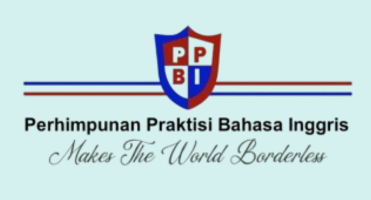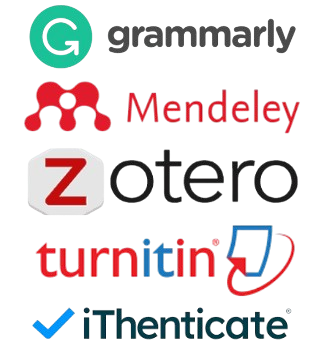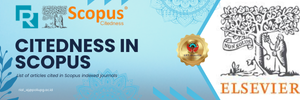A Comparative Study on the Impact of Technology-Enhanced Language Learning on ESL and EFL Students: A Systematic Review
DOI:
https://doi.org/10.31963/rial.v2i1.4516Keywords:
Technology-Enhanced Language Learning, Systematic Review, ESL, EFL, Pedagogical ApproachAbstract
The goal of the study was to get a deeper understanding of how technology-enhanced language learning is utilized to teach and learn languages in higher education. This review follows the Preferred Reporting Items for Systematic Reviews and Meta-Analyses (PRISMA) recommendations. The review begins with a description of the identification process. The best articles published between 2000 and 2022 have been selected to demonstrate how to compare significant aspects and valuable strategies. These articles were selected in accordance with EFL and ESL students. The results are organized into three categories, with the following topics occurring most frequently in the reviewed publications. Researchers may apply task-based learning, communicative, flipped classroom, and other instructional strategies. The second section deals with research instruments. The questionnaire, interview, test, forum group discussion, and observation were utilized to collect data. In conclusion, researchers have compiled a list of publications to be analyzed based on their most current research queries.References
Ahmadi, M. R. (2017). The Impact of Motivation on Reading Comprehension. International Journal of Research in English Education, 2(1), 1–7.
https://doi.org/10.18869/acadpub.ijree.2.1.1
Alavi, S. M., Dashtestani, R., & Mellati, M. (2022). Crisis and Changes in Learning Behaviours: Technology-Enhanced Assessment in Language Learning Contexts. Journal of Further and Higher Education, 46(4), 461–474. https://doi.org/10.1080/0309877X.2021.1985977
Bradley, T., & Lomicka, L. (2000). A case study of learner interaction in technology-enhanced language learning environments. Journal of Educational Computing Research, 22(3), 347–368. https://doi.org/10.2190/TCUA-3YUV-B1P5-26P3
Egbert, J. (2009). Pedagogy, process, and classroom context: Integrating teacher voice and experience into research on technology-enhanced language learning. Modern Language Journal, 93, 754–768. https://doi.org/10.1111/j.1540-4781.2009.00971.x
Ghanizadeh, A., Razavi, A., & Jahedizadeh, S. (2015). Technology-Enhanced Language Learning (TELL): A Review of Resourses and Upshots. International Letters of Chemistry, Physics and Astronomy, 54(July 2019), 73–87. https://doi.org/10.18052/www.scipress.com/ilcpa.54.73
Howard, J. (2017). Any time, any place, flexible pace: Technology-enhanced language learning in a teacher education programme. Australian Journal of Teacher Education, 42(6), 51–68. https://doi.org/10.14221/ajte.2017v42n6.4
Jeffrey, S. (2015). Review of technology enhanced language learning: Connecting theory and practice. Language, Learning and Technology, 19(1), 59–62.
Machi, L. ., & McEvoy, B. . (2012). The Literature Review: Six Steps to Success, (Second). Corwin Press.
Moher, D., Shamseer, L., Clarke, M., Ghersi, D., Liberati, A., Petticrew, M., Shekelle, P., & Stewart, L. A. (2015). Preferred reporting items for systematic review and meta-analysis protocols (PRISMA-P) 2015 statement. Systematic Reviews, 4(1), 1. https://doi.org/10.1186/2046-4053-4-1
Mwendwa, N. K. (2017). Perception of teachers and principals on ict integration in the primary school curriculum in kitui county, kenya. European Journal of Education Studies, 3(7), 408–430. https://doi.org/10.5281/zenodo.824829
Niiranen, S. (2021). Supporting the development of students’ technological understanding in craft and technology education via the learning-by-doing approach. International Journal of Technology and Design Education, 31(1), 81–93. https://doi.org/10.1007/s10798-019-09546-0
Oh, K., & Nussli, N. (2014). Technology-enhanced language learning: A case study of a global classroom in second life. International Journal on Advances in Life Sciences, 6(3–4), 240–251.
Peralta, H., & Costa, F. A. (2007). Teacher ’ s Competence and Confidence regarding the use of ICT. SÃsifo. Educational Sciences Journal, 3, 75–84.
Rüschoff, B., & Ritter, M. (2001). Technology-enhanced language learning: Construction of knowledge and template-based learning in the foreign language classroom. International Journal of Phytoremediation, 21(1), 219–232. https://doi.org/10.1076/call.14.3.219.5789
Sasi, S., Chang, M., Altinay-Aksal, F., Kayimbasioglu, D., Haci, H., Kinshuk, & Altinay-Gazi, Z. (2017). Technology enhanced instruction: An example of English language learning in the context of peace. Eurasia Journal of Mathematics, Science and Technology Education, 13(6), 1605–1614. https://doi.org/10.12973/eurasia.2017.00687a
Webb, M., & Doman, E. (2020). Impacts of flipped classrooms on learner attitudes towards technology-enhanced language learning. Computer Assisted Language Learning, 33(3), 240–274. https://doi.org/10.1080/09588221.2018.1557692
Yang, S. C. (2007). Technology-enhanced language learning: A case study. Computers in Human Behavior, 23(1), 860–879. https://doi.org/10.1016/j.chb.2006.02.015
Zhang, R., Zou, D., Cheng, G., & Xie, H. (2022). Implementing technology-enhanced collaborative writing in second and foreign language learning: A review of practices, technology, and challenges. Education and Information Technologies. https://doi.org/10.1007/s10639-022-10941-9
Downloads
Published
Issue
Section
License
Copyright (c) 2024 Research and Innovation in Applied Linguistics [RIAL]

This work is licensed under a Creative Commons Attribution-ShareAlike 4.0 International License.
Authors who publish with this journal agree to the following terms:
Authors who submit article to this journal, agree to grant the copyright to Research and Innovation in Applied Linguistics (RIAL) under a Creative Commons Attribution License: Creative Commons Attribution-ShareAlike 4.0 International License.
![]()
For collaborative works, authors should ensure that they have secured the necessary permissions from co-authors to submit the manuscript and grant the rights outlined in this policy.
Archiving and Access:
RIAL upholds an open access policy, ensuring that articles are freely accessible to a global audience upon publication. Authors' work will be archived electronically, facilitating its long-term availability and visibility.









.png)


